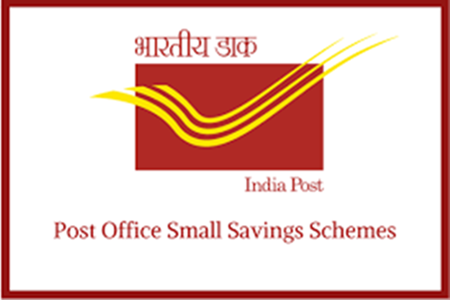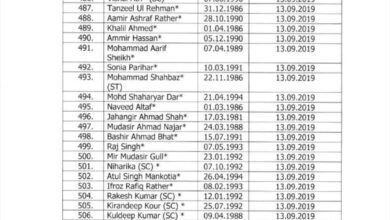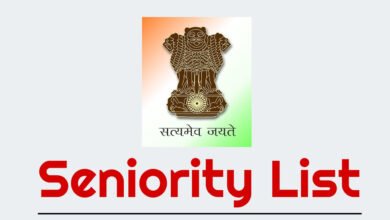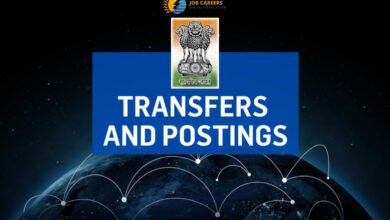Post Office Savings Schemes – Types, Benefits and How to Apply In 2023
Post Office Savings Schemes : Post office is probably the oldest organisation in India and was started in the British era in 1854. It started off as delivering posts only, but later on, widened its services by offering other banking services. Because they are backed by the government, investing in these schemes is considered relatively safe.
Post Office Savings Schemes: Salient features
Post Office Savings Schemes : Who can open :-
-
- (i)a single adult
(ii)two adults only (Joint A or Joint B)
(iii)a guardian on behalf of minor
(iv)a guardian on behalf of person of unsound mind
(iv)a minor above 10 years in his own name - Only one account can be opened by an individual as a single account
- Only one account can be opened in the name of minor/above 10 years of age (self)/person of unsound mind
- In case of death of a Joint holder, the surviving holder will be the sole holder, if surviving holder already has single account in his/her name, Joint account have to be closed
- Conversion of single to joint account or vice versa is not allowed
- Nomination is mandatory at the time of opening of account
- Minor after attaining majority has to submit fresh account opening form and KYC documents of his/her name at concerned Post Office for conversion of the in his/her name
- (i)a single adult
Post Office Savings Schemes : Deposit and Withdrawal: –
-
- All deposits/ withdrawals shall be in whole rupees only.
(i) Minimum deposit amount: – Rs. 500 (subsequent deposit not less than 10 rupees)
(ii) Minimum withdrawal amount: – Rs. 50
(ii)Maximum deposit: – No maximum limit
(iii)No withdrawal will be permitted which effect reducing of minimum balance Rs. 500
(iv) In case account balance not raised to Rs. 500 at the end of financial year Rs. 50 will be deducted as Account Maintenance Fee and if account balance became Nil the account shall stands automatically closed
- All deposits/ withdrawals shall be in whole rupees only.
Post Office Savings Schemes :Interest:-
-
- (i)Interest will be calculated on the basis of minimum balance between 10th of the month and end of the month and allowed in whole rupees only
(ii)No interest will be allowed in a month if balance between 10th and last day of the month falls below Rs. 500
(iii)Interest shall be credited in account at the end of each Financial Year at the interest rate prescribed by Ministry of Finance
(iv)At the time of closure of account, interest will be paid up to the preceding month in which account is closed
(iv)u/s 80TTA of the Income Tax Act, from all Savings Bank Accounts, interest up to Rs. 10,000 earned in a Financial Year is exempted from taxable Income
- (i)Interest will be calculated on the basis of minimum balance between 10th of the month and end of the month and allowed in whole rupees only
Silent Account: –
-
- (i)If no deposit/withdrawal takes place in an account during continuous three financial years, the account shall be treated as silent/dormant
(ii)Revival of such account can be done by submitting application along with fresh KYC documents and passbook at concerned Post Office
- (i)If no deposit/withdrawal takes place in an account during continuous three financial years, the account shall be treated as silent/dormant
Additional Facilities available on PO Savings Account
-
- To avail below facilities on your PO Savings Account, kindly download and submit respective form at concerned Post Office

- To avail below facilities on your PO Savings Account, kindly download and submit respective form at concerned Post Office
Cheque book
-
- (ii)ATM Card
-
- (iii)ebanking/mobile banking
-
- (iv)Aadhaar Seeding
-
- (v)Atal Pension Yojana (APY)
-
- (vi)Pradhan Mantri Suraksha Bima Yojana (PMSBY)
-
-
- (vii)Pradhan Mantri Jeevan Jeevan Jyoti Bima Yojana (PMJJBY)
-
ePassbook for POSB schemes
The Department of Posts (DOP) through the Post Office Savings Bank (POSB) provides various types of accounts as an avenue to the citizens to save and invest their money. The account holders of these schemes are provided a physical passbook into which entries of the transactions are made. To further enhance the convenience of the account holders, the DoP has launched ePassbook feature for the account holders of POSB schemes. ePassbook is a feature providing the following services through an online webpage –
- Balance enquiry
- Mini statement
- Full statement
Following is the workflow for the same in brief –
- After OTP validation, the webpage will provide the option of accessing the ePassbook.
- The customer will have to select the scheme and enter the relevant account details.
- Another OTP validation will be done after which the customer will have to select the required service i.e Balance Enquiry or Mini Statement.
- Based on the service chosen, either the balance will be displayed or the mini statement will be displayed.
- The mini statement can also be downloaded if needed.
Click here to access your ePassbook
- Mini statement will be available for SB, PPF and SSA schemes currently.
- Full statement will be introduced for POSB schemes in a phased manner.
Process to Apply for a Savings Scheme in Post Office
The following steps can enable you to easily apply for a post office saving scheme:4
- Step 1: Visit the closest post office branch.
- Step 2: Get the form to open the relevant account from the post office. However, you can also download the form online from the official portal of the Indian Post Office.
- Step 3: Fill in the form with the needed details and submit it along with the KYC proof. You will also have to give other documents as required.
- Step 4: Finish the process of enrolment by depositing the amount of the scheme you chose.
Required Documents for Post Office Saving Schemes
- Form (relevant)
- KYC Form
- PAN
- Aadhaar
- Driving license
- Voter’s ID card
- Job card
- Proof of date of birth
Charges in respect of different types of ATM transactions are given below.
| Daily ATM cash withdrawal limit | INR. 25000/- |
|---|---|
| Cash withdrawal limit per transaction | INR. 10000/- |
| Charges for transactions done at DOP ATMs | Nil. |
| Free transactions at other bank ATMs (Per month) | Metro Cities – 3 free transactions (Both Financial & Non Financial) Non Metro Cities – 5 free transactions (Both Financial & Non Financial) |
| Charges after free transactions at other bank ATMs | INR. 20/- + GST per transaction
(For financial &non financial transactions) |
FAQs On Banking
-
-
How can I claim payment of deceased account / certificate holder?
The claim can be settled by three modes
Nomination :-Submit nomination claim form with Death Certificate with KYC documents
-
- Legal evidence (Probate of will, Letter of administration, Succession certificate) :- Submit Claim Form, Legal evidence and Death certificate with KYC documents.
- Without nomination ( up to 5 Lakh ) :- Submit claim form, death certificate, Annexure-I (Letter of Indemnity) , Annexure-II(Affidavit) and Annexure III (Letter of disclaimer of affidavit) with KYC documents of claimant,deponents, witnesses, sureties etc.Note:-
- If there is no nomination and deposit value at the date of death is above Rs. 5 Lakh , claim can be settled only through Succession Certificate.
- Claim in case of without nomination (up to 5 lakh) can be settled after 6 month of death of the depositor.
-
-
How to transfer accounts and certificate?
For transfer of accounts/certificate- the depositor should apply in the prescribed form SB 10(B)/NC-32 with Passbook and KYC documents. The transfer application can be given either in transferring office or transferee office. However the transfer process will be done by respective Head Post Offices.
-
-
-
How to open an account in post office and its requirements?
To open an account in Small Savings Schemes viz Savings Account (SB), Recurring Deposit (RD), Time Deposit (TD), Monthly Income Scheme (MIS), Senior Citizen Savings Scheme (SCSS)submit Account Opening Form (AOF) duly filled in with KYC documents and deposit slip(SB 103) in desired Post Office.
-
What is silent account and how to revive it?
An account in which a deposit or withdrawal has not taken place for three complete Financial Years, shall be treated as silent account.
For revival, one application from the customer with KYC documents is required. Respective HO will revive the accounts.
- What are late payment fees for recurring deposits?The monthly deposits for account opened between 1 to 15 should be credited up to 15th of the month and account opened between 16 to the last of the month monthly deposit should be credited by last day of the month. If the monthly installment is not credited for any particular month, then it becomes a default. The defaulted months can be credited subsequently (revival fee for INR. 100/- denomination is Re. 1 for each month of default) maximum 4 defaults are allowed.
-
What is the procedure for the issue of duplicate certificates?
The investor should apply in the prescribed form for duplicate certificate in respect of lost, stolen, destroyed, mutilated or defaced certificates (NC-29).
The application shall be accompanied by a statement showing particulars of certificates and furnish an indemnity bond in the prescribed form with one or more sureties or with a bank guarantee.In case of mutilated or defaced certificates, no indemnity bond is required. The duplicate certificate will be issued in the form of Passbook from respective HO.
-
How I get duplicate passbook?
Application in the prescribed form or manuscript application may be given. A prescribed fee for issue of duplicate passbook to be paid. New duplicated Passbook will be issued by respective Head Post Offices.
-
What are the norms for issuing a Cheque Books?
Cheque books are issued in respect of Post Office Savings Account. Minimum balance to be maintained in respective Post Office Savings Account should be Rs. 500.
-
What are the service charges for outstations Cheque?
Cheque realization charges for outstation Cheque.
INR. 30/- for first thousand or part
INR. 3/- for each additional thousand or part
In case of bouncing of Cheque INR. 50/- is charges as service charge. -
Can Monthly Income Scheme (MIS) interest be credited to RecurringDeposit (RD) account?
No. There is no provision. MISInterest amount can be credited to SB account and Standing Instruction can be given for credit into RD from SB. A prescribed application form to be submitted to respective Post Office.
-
What is the minimum balance required for an account?
Minimum balance in respect of different types of Small Savings Accounts is given below. Post Office Savings Account INR. 500/- National Savings Recurring Deposit Account INR. 100/- Monthly Income Scheme INR. 1000/- Time Deposit Account INR. 1000/- Public Provident Fund INR. 500/- Sukanya Samriddhi Account INR. 250/- Senior Citizen Savings Scheme INR. 1000/- National Savings Certificate (VIIIth Issue) INR. 1000/- Kisan Vikas Patra INR. 1000/- -
How I can get encashment of certificates / account before maturity?
Premature encashment conditions for Small Savings Schemes as below. POSA Can be closed at any time RD Can be closed after 3 years, only SB rate of interest is permissible. TD Can be closed after 6 months* MIS Can be closed after 1 year*. PPF After 5 years only in case of Severe Illness, Higher Education and NRI status. SSA On the occasion of marriage of girl child after age 18. SCSS Can be closed at any time*. NSC (VIII Issue) Premature encashment is not permitted (except in case of death and forfeiture). KVP After 2 years 6 months Preclosure fee at prescribed rates are applicable
-
Are there any charges for the use of ATM Card ?
Charges in respect of different types of ATM transactions are given below.
Daily ATM cash withdrawal limit INR. 25000/- Cash withdrawal limit per transaction INR. 10000/- Charges for transactions done at DOP ATMs Nil. Free transactions at other bank ATMs (Per month) Metro Cities – 3 free transactions (Both Financial & Non Financial)
Non Metro Cities – 5 free transactions (Both Financial & Non Financial)Charges after free transactions at other bank ATMs INR. 20/- + GST per transaction (For financial &non financial transactions)
-
Charges for ATM transactions on ATM outlets of lndia Post as well as other banks
| Transaction Type | Charges (Rs.) | Date of implementation |
|---|---|---|
| Debit Card Replacement Charges | Rs.300/- + GST | 01.10.2021 |
| Duplicate PIN/Regeneration of PIN through Branch | Rs.50/- + GST | 01.10.2021 |
| ATM/POS transaction Technical declines attributable to customer (i.e. lack of balance in account) | Rs.20/- + GST | 01.10.2021 |
| AT PoS – Cash withdrawals for DoP Debit cards (On- Us transactions) | 1% of the transaction value subject to a maximum of Rs.5/- per transaction | 01.10.2021 |
| Charges for Withdrawal at ATM | Financial Transactions at other ATMs – Beyond 3 free transactions- (ln Metro Cities) and 5 free transactions in Non-Metro Cities Rs.20/- + GST | 01.10.2021 |
| Financial Transactions at own ATMs-Beyond 5 free transactions- Rs.10/- + GST | 01.10.2021 | |
| Non-Financial Transactions at other ATMs – Beyond 3 free transactions- (ln Metro Cities) and 5 free transactions in Non-Metro Cities – Rs.8/- + GST | 01.10.2021 | |
| Non-Financial Transactions at own ATMs – Beyond 5 free transactions Rs.5/- + GST | 01.10.2021 | |
| ATM/Debit Card Annual Maintenance Charges | Rs.125/- + GST | Charges are applicable on Cycle of 01.10.2021 to 30.09.2022 and Subsequent cycles.charges to be collected at the end of the cycle i.e. on 30.09.2022 |
| SMS Alert charges per annum from Debit card Holders | Rs.12/- (incl GST) | Charges are applicable on Cycle of 01.10.2021 to 30.09.2022 and Subsequent cycles.charges to be collected at the end of the cycle i.e. on 30.09.2022 |
- In which savings accounts ATMs card/Net banking can not be issue ?
-
-
- Minor/Lunatic Account
- Joint A Account
-
-
-
Whether Netbanking /Mobile Banking facilities available in Post Office Savings Accounts ?
Intra Operable Netbanking/Mobile Banking facilities is available for Post Office Savings Accounts customers of CBS Post Offices. This will work within POSB ie DoP network.
-
How can I activate Intra Operable netbanking /mobile banking ?
Post Office Saving Account customer to submit duly filled request form in respective Post Office, After enabling desired service in customers Savings Accounts by Post Office, customer will get activation code on his/her mobile within 48 hours to proceed further.
-
What facilities is available in Intra Operable Netbanking ?
-
- View transaction of all linked accounts.
- View/Print statement .
- Fund transfer between Post Office Savings Accounts.
- Deposit in linked RD Accounts.
- Deposit in linked SSA Account.
- Deposit in linked PPF account.
- Opening of TD account.
- Opening of RD account.
- Cheque Stop payment request.
-
-
FOR FULL 👉: CLICK HERE












